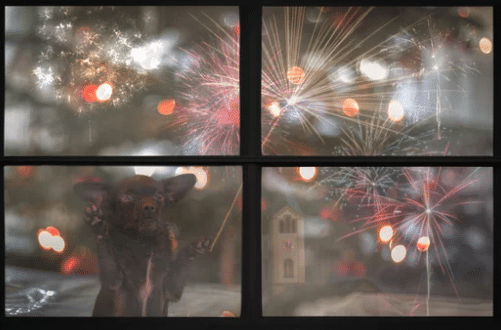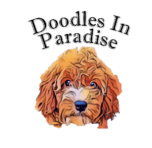If you aren’t sure what socialization is, start here. Learning how to socialize your puppy is actually quite easy, once you learn how to read your puppy’s body language. We separate the process into two phases. Phase I, which takes place inside, lays the foundation for phase II which takes place outside. The same basic formula is at work in both phases.
Carefully introduce new stimuli -> create positive association (reward/praise) -> gradually increase exposure
Phase I
6 Weeks to 9 Weeks
- before shots are complete
- takes place entirely inside
- focuses on process
Phase I utilizes the time prior to completion of the first shot regimen when your puppy should avoid going outside, to prepare them for it. It’s about teaching your puppy that new things will enter their environment and that it is okay, while teaching you how to read their body language. How long this phase lasts depends on what age you receive the puppy. If your puppy is already old enough to go outside, it is still recommended that you engage in phase I exercises for a day or two before going on to phase II.
Steps to follow
- Introduce new object, by placing it in their environment. It should be nearby, but close to them.
- Let them investigate the object. It’s better if they approach the object of their own accord
- Reward them with treats and praise for calmness, approaching the object, and investigating the object.
- Once they are comfortable, gradually increase the stimuli by moving it, making it make sounds, and finally touching them with the object, rewarding them along the way
- Introduce a more challenging object, repeat steps.
If your puppy is showing signs of discomfort, withdraw the object or tone down the stimulation of it and try again the next day starting at a lower level of challenge.
Common items for phase I socialization
Here is by no means an exhaustive list of items to introduce, but a good starting point for Phase I:
- Leash
- Grooming items (razor, toothbrush, blow dryer, etc.)
- Skateboard/roller blades
- Other animals
- New people
- Vaccuum
- Washing Machine/Dryer
- Bathtubs/running water
Once it’s safe to go outside and you have worked with your puppy to give them a foundation, take them outside!
Phase II
9 Weeks to 20 Weeks
- After first shots are complete
- takes place entirely outside
- focuses on the diversity of experiences
Phase II is the bulk of socialization training. It’s about teaching your puppy to be comfortable in a multitude of very different environments. This is your chance to expose them to as many experiences as possible while their brain is developing its baseline expectations.
Steps to follow
- Introduce a new place, by gradually approaching the environment.
- Pause often if your puppy does, it’s best not to rush them. Let them feel a new place out.
- Reward them with treats and praise for calmness, approaching elements in the environment, and investigating the object.
- Once they are comfortable, gradually increase the stimuli by having them go with other household members, and increasing the exposure to new people and animals, rewarding them along the way.
- Introduce a more challenging environment, repeat steps.
If your puppy is showing signs of discomfort, withdraw from the stimulation and try again the next day starting at a lower level of challenge.
Common places for phase II socialization
Here is by no means an exhaustive list of places to introduce, but a good starting point for Phase I:
- Parks
- Sidewalks of streets
- Downtown
- Coffee shops
- Car rides
- Grooming Shops
- Vet
Final Note:

It isn’t possible to expose your puppy to every experience they will have over their lifetime in the first few months. The goal is to equip them to handle every possible experience they may have. That said, it is also impossible to prevent them from ever feeling scared or reacting badly to a new experience. The fireworks during fourth of July are notoriously terrifying for dogs. But, if you have done your best, they will be far better off, and always comfortable in knowing you are there to see them through it.

